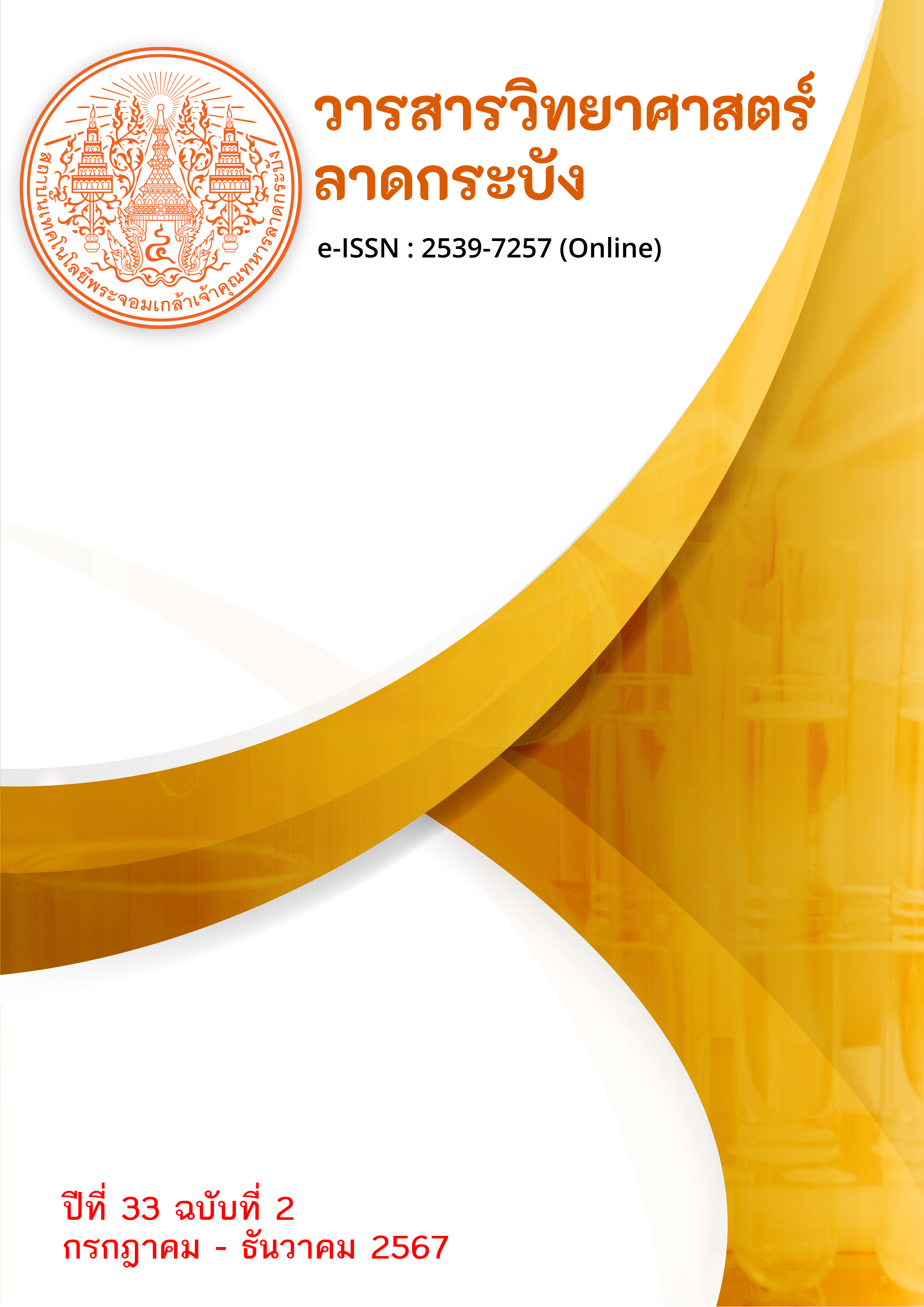การวิเคราะห์ปัจจัยในทฤษฎีรวมของการยอมรับและการใช้เทคโนโลยี รุ่น 2 : อิทธิพลการกำกับการยอมรับและการใช้งานตู้ซื้อสินค้าอัตโนมัติ
Main Article Content
บทคัดย่อ
วัตถุประสงค์งานวิจัยนี้เพื่อ 1) พัฒนาแบบวัดการยอมรับและการใช้งานตู้ซื้อสินค้าอัตโนมัติให้เป็นไปตามมาตรฐาน 2) ศึกษาอิทธิพลของการยอมรับที่มีต่อการใช้งานตู้ซื้อสินค้าอัตโนมัติ และ 3) ศึกษาบทบาทของตัวแปรกำกับที่มีผลต่อระดับอิทธิพลของการยอมรับที่มีต่อการใช้งานตู้ซื้อสินค้าอัตโนมัติ โดยมีตัวแปรกำกับ คือ เพศ อายุ และประสบการณ์ โดยศึกษากับ 406 หน่วยตัวอย่างที่มีประสบการณ์การใช้งานตู้ซื้อสินค้าอัตโนมัติไม่น้อยกว่า 2 ครั้งใน 1 เดือนที่ผ่านมา ในพื้นที่ให้บริการในเขตกรุงเทพมหานครและปริมณฑล ด้วยการเลือกตัวอย่างแบบโควตา โดยใช้แบบสอบถามที่ผ่านการประเมินความตรงเชิงเนื้อหาทั้งรายข้อและรายฉบับ และค่าความเชื่อมั่นด้วยค่าสัมประสิทธิ์แอลฟ่าของครอนบาค วิเคราะห์ข้อมูลในเชิงสถิติ ได้แก่ วิธีการ Mahalanobis d-Square วิธีการเปรียบเทียบค่าเฉลี่ยของความแปรปรวนที่สกัดได้กับการแบ่งปันความแปรปรวน การพัฒนาแบบจำลองสมการโครงสร้าง และวิเคราะห์กลุ่มพหุ ผลการวิจัย พบว่า 1) แบบวัดที่ได้เป็นไปตามทฤษฎีรวมของการยอมรับและการใช้เทคโนโลยี รุ่น 2 และผ่านเกณฑ์การประเมินมาตรฐานด้านความตรง 2) ความคาดหวังในประสิทธิภาพ อิทธิพลของสังคม แรงจูงใจด้านอารมณ์ความรู้สึก มูลค่าราคา และความเคยชินเป็นปัจจัยที่มีผลโดยตรงต่อความตั้งใจที่จะใช้งาน อีกทั้งความเคยชินและความตั้งใจที่จะใช้งานก็มีผลโดยตรงต่อการใช้งาน และ 3) เพศและอายุเป็นตัวแปรกำกับอิทธิพลจำนวน 2 เส้นทาง และประสบการณ์เป็นตัวแปรกำกับอิทธิพลจำนวน 3 เส้นทาง
Article Details

อนุญาตภายใต้เงื่อนไข Creative Commons Attribution-NonCommercial-NoDerivatives 4.0 International License.
เอกสารอ้างอิง
Davis, F.D. 1989. Perceived Usefulness, Perceived Ease of Use, and User Acceptance of Information Technology. MIS Quarterly, 13(3), 319-339, https://doi.org/10.2307/249008.
Triandis, H.C. 1977. Interpersonal Behavior. Brooke/Cole, Monterey, CA.
Roger, E. 1995. Diffusion of Innovations. Free Press, New York.
Taylor, S. and Todd, P.A. 1995. Understanding Information Technology usage: A test of competing model. Information System Research, 6(2), 144-176.
Venkatesh, V., Morris, M. and Davis, G.B. 2003. User acceptance of information technology: Toward a unified view. MIS Quarterly, 27(3), 425-478, https://doi.org/10.2307/30036540.
Venkatesh, V., Thong, Y.L. and Xu, X. 2012. Consumer acceptance and use of information technology: Extending the unified theory of acceptance and use of technology. MIS Quarterly, 36(1), 157-178, https://doi.org/10.2307/41410412.
Chang, C-M., Liu, L-W., Huang, H-C. and Hsieh, H-H. 2019. Factors Influencing Online Hotel Booking: Extending UTAUT2 with Age, Gender, and Experience as Moderators. Information, 10(9), 1-18, https://doi.org/10.3390/info10090281.
Arista, A. and Abbas, B.S. 2022. Using the UTAUT2 model to explain teacher acceptance of work performance assessment system. International Journal of Evaluation and Research in Education, 11(4), 2200-2208, http://doi.org/10.11591/ijere.v11i4.22561.
Mishra, N., Gupta, S.L., Srivastava, P., Srivastava, S. and Kabir, M. 2022. Student Acceptance of Social Media in Higher Education: An application of UTAUT2 model. Thailand and the world economy, 40 (1), 88-108.
Farsi, G.A. 2023. The Efficiency of UTAUT2 Model in Predicting Student’s Acceptance of Using Virtual Reality Technology. International Journal of Interactive Mobile Technologies, 17(12), 17-27, https://doi.org/10.3991/ijim.v17i12.36951.
Sharma, D. 2023. Factors affecting M-payment adoption in millennials: Testing extended UTAUT2 model. Thailand and the world economy, 41(2), 40-61.
Hammouri, Q. et al. 2023. An empirical investigation on acceptance of e-wallets in the fintech era in Jordan: Extending UTAUT2 model with perceived trust. International Journal of Data and Network Science, 7(3), 1249-1258, https://dx.doi.org/10.5267/j.ijdns.2023.4.013.
Ciftci, S.K., Gok, R. and Karadag, E. 2023. Acceptance and use of the distance education systems of Turkish medical educators during COVID-19 pandemic: an analysis of contextual factors with the UTAUT2. BMC Medical Education, 23(36), 1-12, https://doi.org/10.1186/s12909-023-04024-7.
อภิญญา อิงอาจ. 2565. หลักการ ทฤษฎี และแนวปฏิบัติ: การพัฒนาแบบจำลองสมการโครงสร้าง. สำนักพิมพ์จุฬาลงกรณ์มหาวิทยาลัย, กรุงเทพฯ. [Ingard, A. (2022). Principles theories and practices: structural equation modeling. Chulalongkorn University Press, Bangkok. (in Thai)]
Lynn, M. 1986. Determination and Quantification of Content Validity Index. Nursing Research, 35(6), 382-386, https://doi.org/10.1097/00006199-198611000-00017.
Nunnally, J.C. 1978. Psychometric Theory. 2nd ed., McGraw-Hill, New York.
Fornell, C. and Larcker, D.F. 1981. Evaluating structural equation models with unobservable variables and measurement error. Journal of Marketing Research, 18(1), 39–50, https://doi.org/10.2307/3151312.
Browne, M.W. and Cudeck, R. 1992. Alternative ways of assessing model fit. Sociological Methods and Research, 21, 230-258, https://doi.org/10.1177/0049124192021002005.
Kline, R.B. 1998. Principles and Practice of Structural Equation Modeling. The Guilford Press, New York.
Hu, L.T. and Bentler, P.M. 1999. Cutoff Criteria for Fit Indexes in Covariance Structure Analysis: Conventional Criteria Versus New Alternatives. Structural Equation Modeling, 6(1), 1-5, https://doi.org/10.1080/10705519909540118.
Schumacker, R.E. and Lomax, R.G. 2004. A beginner's guide to structural equation modeling. 2nd ed., Lawrence Erlbaum Associates Publishers.
Hair, J.F., Black, W.C., Babin, B.J. and Anderson, R.E. 2010. Multivariate Data Analysis. 7th ed., Pearson, New York.
บุญใจ ศรีสถิตย์นรากูร. 2555. การพัฒนาและตรวจสอบคุณภาพเครื่องมือวิจัย : คุณสมบัติการวัดเชิงจิตวิทยา. โรงพิมพ์แห่งจุฬาลงกรณ์มหาวิทยาลัย, กรุงเทพฯ. [Srisatidnarakul, B. (2012). Development and Validation of Research Instruments: Psychometric Properties. Chulalongkorn University Printing House, Bangkok. (in Thai)]

